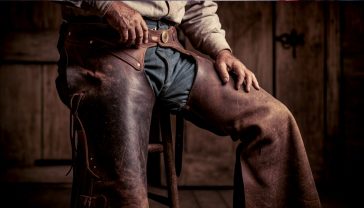Motorcycle Jackets: The Ultimate Guide to Finding the Best in Britain
Your complete guide to buying a motorcycle jacket in the UK. Understand safety ratings, materials, and styles to find the best gear for your ride.

This post may contain affiliate links. If you make a purchase through these links, we may earn a commission at no additional cost to you.
Riding a motorcycle isn’t just about getting from A to B. It’s a feeling. It’s the thrill of the open road, the wind in your… well, not your hair, because you’re wearing a helmet. And just as crucial as that helmet is what you wear on your body. We’re talking about the motorcycle jacket: a piece of kit that’s part armour, part style statement, and 100% essential for any rider in the UK.
For decades, the motorcycle jacket has been an icon of cool, worn by rebels, film stars, and everyday heroes. Think of the mods and rockers clashing on Brighton beach, or Ewan McGregor and Charley Boorman gearing up for a worldwide adventure. The jacket is more than just clothing; it’s a symbol of freedom and defiance.
But let’s be honest, it’s not just about looking the part. A proper motorcycle jacket is your first line of defence against the unpredictable British weather and, more importantly, against the tarmac. Choosing the right one can feel overwhelming. Leather or textile? What on earth do ‘CE ratings’ mean? And how do you find one that fits you properly without making you look like a poorly wrapped sausage?
Don’t worry. This guide is here to demystify everything. We’ll break down the different materials, explain the safety standards in simple terms, explore the classic styles, and give you the practical tips you need to find the perfect jacket. Whether you’re a seasoned rider with thousands of miles under your belt or a brand-new biker just starting your journey, consider this your definitive roadmap to finding the best motorcycle jacket for you.
Part 1: Why Your Jacket Is More Than Just a Fashion Statement
Before we dive into the nuts and bolts, let’s get one thing straight: a normal fashion jacket is not a motorcycle jacket. A high-street leather jacket might look cool, but it will disintegrate in seconds if you come off your bike. A proper riding jacket is engineered for two things: protection and comfort.
The Science of Safety: Abrasion and Impact Resistance
When you’re choosing a jacket, you’re essentially choosing your second skin. If the worst happens and you part company with your bike, your gear is the only thing between you and the road.
- Abrasion Resistance: This is a fancy way of saying “how well does it hold up when sliding across the ground?” Materials like thick leather or specialised textiles (which we’ll cover later) are designed to withstand the immense friction of a slide, protecting your skin from being scraped away. Standard denim or fashion leather offers virtually no protection here.
- Impact Protection: Your jacket also needs to cushion the blow against hard surfaces. This is where body armour comes in. All good motorcycle jackets come with pockets for armour at the key impact points: the shoulders, elbows, and usually the back. This armour is made from clever materials that are soft and flexible during normal riding but become rigid upon impact, absorbing the force that would otherwise go into your bones and joints.
Battling the Great British Weather
Let’s face it, the UK weather is famously unpredictable. You can leave home under blue skies and be riding through a downpour an hour later. Your jacket needs to be your personal weather shield.
- Waterproofing: Many jackets come with built-in waterproof membranes (like Gore-Tex) to keep you dry. Some have removable waterproof liners, which offer flexibility. There’s nothing more miserable than being soaked to the bone on a long ride, so good waterproofing is a must for most British riders.
- Windproofing: At 70 mph, even a mild day can feel freezing. A good jacket will block the wind, preventing wind chill and keeping your core temperature stable.
- Breathability: While you want to keep wind and rain out, you also need to let sweat escape. A jacket that doesn’t “breathe” will leave you feeling damp and clammy from the inside. Modern materials are designed to be waterproof yet breathable, keeping you comfortable.
- Thermal Liners: For those chilly morning commutes or winter rides, many jackets come with a removable thermal liner. This quilted layer traps body heat, keeping you warm. In summer, you can simply zip it out.
Part 2: The Great Debate: Leather vs. Textile
This is the classic head-to-head battle in the world of motorcycle gear. Both leather and textile have their champions, and the right choice for you depends on your riding style, your budget, and what you prioritise. There’s no single “best” material—only what’s best for you.
The Case for Leather: Classic Cool and Unbeatable Protection
Leather is the original and, for many, still the ultimate choice. It has a timeless appeal and a reputation for fantastic abrasion resistance.
Why Choose Leather?
- Top-Tier Abrasion Resistance: When it comes to sliding down the road, high-quality cowhide is incredibly tough. It’s the reason you see professional racers decked out in head-to-toe leather. It offers the best protection against friction burns.
- Moulds to Your Body: A good leather jacket will break in over time, moulding to your shape for a perfect, comfortable fit. It becomes uniquely yours.
- Durability and Longevity: With a bit of care (cleaning and conditioning), a quality leather jacket can last for decades. It’s an investment that pays off in the long run.
- The Look: Let’s be honest, nothing looks quite as cool as a classic leather biker jacket. It’s an iconic style that never fades.
The Downsides of Leather
- Not Naturally Waterproof: Most leather jackets will soak through in a heavy downpour unless they’ve been treated or have a waterproof membrane.
- Heavy and Stiff (at first): A new leather jacket can feel heavy and restrictive until it’s properly broken in.
- Can Be Hot in Summer: In a summer traffic jam, a black leather jacket can feel like a personal oven. Some have ventilation zips, but they generally aren’t as breathable as textiles.
- Less Versatile: They often have fewer pockets and features than their textile counterparts.
- Higher Price: A good quality leather jacket is often more expensive upfront than a textile equivalent.
The Case for Textile: The Practical All-Rounder
Textile jackets are the modern workhorses of the motorcycle world. Made from advanced synthetic materials like Cordura, Kevlar, or Nylon, they offer incredible versatility and practicality.
Why Choose Textile?
- All-Weather Performance: This is where textile jackets really shine. Most come with built-in waterproof and breathable membranes, as well as removable thermal liners. One jacket can take you from a cold, wet winter morning to a warm summer afternoon.
- Lightweight and Comfortable: They are generally lighter than leather and comfortable right from the first wear, with no break-in period needed.
- More Features: Textile jackets are often packed with practical features like multiple pockets, adjustable vents for airflow, and reflective panels for visibility.
- Excellent Abrasion Resistance: While top-end leather still has a slight edge, modern textiles are incredibly tough. Materials are rated by their ‘Denier’ (D) number—the higher the number (e.g., 600D, 1000D), the thicker and more abrasion-resistant the fabric.
- More Affordable: You can often get a high-spec textile jacket for less than the price of a premium leather one.
The Downsides of Textile
- Less “Classic” Style: While styles have improved hugely, many riders still prefer the timeless look of leather.
- Can Be Less Durable Over a Lifetime: While very tough, a textile jacket might not last as many decades as a well-cared-for leather one. In a crash, the material can sometimes be compromised after one slide, whereas leather can often be repaired.
- Can Feel Bulky: With all the layers and liners, some textile jackets can feel a bit bulky compared to a sleek leather jacket.
The Hybrid Option: The Best of Both Worlds?
Some jackets offer a combination of leather and textile. These often use leather in the key impact areas (shoulders, elbows) for maximum abrasion resistance, with textile panels elsewhere for flexibility, ventilation, and comfort. They can be a great compromise if you can’t decide between the two.
Verdict:
- For the traditionalist, the weekend café racer, or the track day enthusiast: Leather is hard to beat for its classic style and ultimate abrasion protection.
- For the daily commuter, the year-round tourer, or the adventure rider: Textile offers unbeatable versatility, weather protection, and practicality.
Part 3: Cracking the Code: Understanding Safety Standards (CE Ratings)
This is probably the most confusing part of buying gear, but it’s also the most important. You’ll see labels like “CE Approved,” “CE Certified,” and ratings like “A,” “AA,” or “AAA.” What does it all mean?
Since 2018, all motorcycle clothing sold in the UK and EU must be tested and certified as Personal Protective Equipment (PPE). This is a good thing—it means you can be sure the gear you’re buying actually offers a proven level of protection.
The standard is called EN 17092, and it rates garments from C (least protective) to AAA (most protective). The rating is based on tests for abrasion resistance, seam strength, and tear resistance.
Here’s a simple breakdown of the clothing ratings:
- AAA Rating: The highest level of protection. This is gear designed to withstand the high speeds and risks of track riding. It offers the best abrasion resistance but can be heavier and less comfortable for everyday use.
- AA Rating: This is the sweet spot for most riders. It offers excellent protection for touring and daily riding, balancing strong abrasion resistance with comfort and flexibility. The vast majority of good quality leather and textile gear sits in this category.
- A Rating: This is considered the minimum level for protection in normal riding. It’s often found in lighter, more casual-looking gear like riding jeans or urban jackets. It’s designed for lower speeds and offers less abrasion resistance than AA or AAA.
- B Rating: This rating is for garments that offer some abrasion resistance but do not include impact protectors. Think abrasion-resistant leggings worn under normal clothes.
- C Rating: This is for garments that only hold impact protectors in place, like a mesh undershirt with armour pockets, but offer no significant abrasion resistance on their own.
Our advice? Aim for an A rating as an absolute minimum, but an AA-rated jacket is the recommended choice for the majority of road riders.
Don’t Forget the Armour!
The jacket’s rating is only half the story. The armour inside is just as crucial. The armour itself is also CE-rated.
- CE Level 1: Offers a good, standard level of impact protection. It’s often thinner and more flexible, making it comfortable for everyday wear.
- CE Level 2: Offers roughly double the impact protection of Level 1. It absorbs more force but can be a bit bulkier and stiffer.
Most jackets come with Level 1 armour in the shoulders and elbows as standard. Many riders choose to upgrade the back protector to Level 2, as the spine is such a critical area to protect. Some premium jackets will come with Level 2 armour throughout.
Look for the label! A genuine CE-rated jacket will have a label inside with a pictogram of a person on a motorbike, the EN 17092 standard number, and the A, AA, or AAA rating clearly displayed.
Part 4: Finding Your Style: A Tour of Motorcycle Jackets
Motorcycle jackets come in a huge range of styles, each suited to different types of bikes and riding. Here are some of the most common types you’ll find.
The Classic Leather Biker Jacket
This is the icon. Often called a “cruiser” or “Brando” style jacket, it’s typically made of black leather, has an asymmetric zip, wide lapels, and plenty of silver hardware. It’s the look of rebellion and has been a staple for decades.
- Best for: Cruiser riders, café racers, and anyone wanting a timeless, stylish look.
- Watch out for: Make sure it’s a proper riding jacket with armour, not just a fashion item.
The Café Racer Jacket
A more minimalist and streamlined leather jacket. It has a straight front zip, a simple stand-up collar (often with a popper), and a clean, uncluttered look. It was born in the 60s from the British rocker subculture, designed for zipping between cafés on stripped-down bikes.
- Best for: Riders of modern classics, retro bikes, and anyone who prefers an understated, clean style.
The Touring/Adventure Jacket
This is the ultimate do-it-all jacket, almost always made from textile. It’s designed for long-distance comfort in any weather.
- Key Features:
- Longer cut to prevent it from riding up and to provide more weather protection.
- Multiple layers: a tough outer shell, a removable waterproof liner, and a removable thermal liner.
- Lots of pockets, both inside and out.
- Adjustable vents on the chest, back, and arms for airflow.
- Adjusters on the waist, arms, and cuffs for a perfect fit.
- Best for: All-year-round commuters, long-distance tourers, and adventure riders who venture off the beaten path.
The Sport/Race Jacket
Designed for performance and aerodynamics, these jackets have a short, snug fit. They are often brightly coloured for visibility on the track and are designed to be zipped to matching trousers to form a two-piece suit.
- Key Features:
- Pre-curved arms to fit a sporty, tucked riding position.
- Stretchy accordion panels for flexibility.
- Often features external sliders on the shoulders and elbows.
- Tight, athletic fit to stop it from flapping at high speed.
- Best for: Sports bike riders and those who enjoy track days.
The Urban/Casual Jacket
This is a growing market for riders who want protection without looking like they’ve just stepped off a racetrack. These jackets use technical materials but are styled to look like regular clothing.
- Styles include: Waxed cotton jackets (a classic British look), riding hoodies with armour and Kevlar lining, and bomber-style jackets.
- Best for: Scooter riders, city commuters, and anyone who wants a jacket they can wear on and off the bike without standing out. Just be sure to check that CE rating—aim for at least an ‘A’ rating.
Part 5: The Perfect Fit: How a Motorcycle Jacket Should Feel
A poorly fitting jacket is not just uncomfortable; it’s unsafe. If it’s too loose, the armour can move out of place in a crash, leaving your elbows and shoulders exposed. If it’s too tight, it can be restrictive and distracting while you ride.
Here’s how to get the fit just right:
- Try It On in Your Riding Position: Don’t just stand in front of the mirror. Sit on a bike in the shop, or at least mimic your riding position. Reach forward for the handlebars. The jacket shouldn’t feel tight across your back or pull at your shoulders.
- Sleeve Length is Key: The sleeves should be slightly longer than a normal jacket. When you extend your arms to the bars, the cuffs should still cover your wrists. You don’t want a gap between your glove and your jacket sleeve.
- Check the Armour Placement: The shoulder armour should sit squarely on top of your shoulder joint. The elbow armour should cover your elbow, and not slide down your forearm. If you bend your arm, it should stay in place.
- Consider the Layers: If you’re buying a textile jacket with liners, try it on with all the liners in, and then with them all out. A good jacket will have adjustment straps on the arms and waist to cinch it in when you remove the liners, preventing it from becoming baggy.
- It Should Be Snug, Not Tight: The jacket should be snug enough that it won’t flap around in the wind, but you should still have enough room to move freely and comfortably. You should be able to fit a couple of fingers between your chest and the jacket.
- Jacket Length: For most riding, you want a jacket that covers your lower back even when you’re leaning forward. A short “race fit” jacket is fine on a sports bike but might leave your back exposed on a more upright touring bike. Many jackets have a connection zip at the back to attach to your riding trousers, which is the best way to stop it from riding up.
Part 6: Essential Features to Look For
Beyond the material and the fit, here are a few other features that can make a big difference to your comfort and safety.
- Ventilation: For summer riding, good ventilation is a lifesaver. Look for zipped vents on the chest, back, and under the arms. This allows air to flow through the jacket and cool you down.
- Adjustability: We’ve mentioned this, but it’s worth repeating. Look for adjusters on the waist, cuffs, and arms. This lets you tailor the fit perfectly, with or without liners.
- Pockets: How much stuff do you carry? Consider the number and placement of pockets. A waterproof internal pocket is brilliant for your phone and wallet.
- Reflective Details: To help you be seen, especially at night, look for subtle reflective panels or piping. This can be a huge safety feature, making you much more visible in car headlights.
- Connection Zips: A short zip at the back of the jacket allows you to connect it to your riding trousers. This stops the jacket from riding up in a slide and prevents drafts. There are two main types: a short connection zip and a full 360-degree waist zip.
- Soft Collar and Cuffs: A collar lined with a soft material like neoprene will be much more comfortable against your neck on long rides. Similarly, soft cuffs won’t chafe your wrists.
Part 7: Caring for Your Jacket
Your jacket is a serious piece of kit and a significant investment. Look after it, and it will look after you.
Looking After Leather
- Cleaning: Don’t put it in the washing machine! Wipe it down with a damp cloth to remove dirt and dead flies. For a deeper clean, use a specialised leather cleaner.
- Conditioning: Leather can dry out and crack over time. Every few months, apply a good quality leather conditioner. This keeps it supple and water-resistant.
- Drying: If you get caught in the rain, don’t hang your leather jacket over a radiator or use a hairdryer. Let it air dry naturally, away from direct heat.
- Storage: Store it on a wide, padded hanger to help it keep its shape.
Looking After Textile
- Check the Label: Most textile jackets can be machine washed, but always read the care label first.
- Remove Armour and Liners: Before washing, take out all the armour and any removable liners. You can usually wash the liners separately.
- Use a Non-Bio Detergent: Use a gentle, non-biological detergent or a specialised technical wash product. Normal detergents can strip the waterproof coating.
- Re-proofing: Over time, the waterproof coating on the outside of the jacket (known as the DWR finish) will wear off. You’ll know this is happening when rainwater stops beading up and starts soaking into the outer fabric. You can restore this using a wash-in or spray-on re-proofing product.
Conclusion: Your Perfect Jacket is Out There
Choosing a motorcycle jacket is a personal journey. There’s no single “best” jacket, but there is a perfect jacket for you—one that fits your body, your bike, your style, and your budget.
Don’t rush the decision. Think about the kind of riding you do most often. Are you a sunny-day café hopper, a year-round commuter, or a weekend adventurer? Be honest about your needs.
Our best advice is to go to a proper motorcycle gear shop. Try on lots of different styles and brands. Talk to the staff—they’re usually bikers themselves and have a wealth of knowledge. Sit on some bikes, check the fit, and don’t be afraid to ask questions.
Your jacket is your trusted companion on the road. It’s your armour, your weather shield, and a reflection of your identity as a rider. Invest in a good one, look after it, and it will protect you for many thousands of happy and safe miles to come.
Further Reading
For more in-depth reviews, safety information, and advice, check out these highly respected UK resources:
- Bennetts BikeSocial: An incredible resource for independent, in-depth reviews of motorcycle gear, including detailed testing of abrasion resistance and waterproofing.
- Ride Magazine (and RiDE Recommended): Known for its rigorous product testing and its “RiDE Recommended” triangle, a trusted mark of quality.
- Motorcycle News (MCN): A go-to for the latest news, reviews, and advice on all things motorcycling, including a huge gear section.
- The UK Government’s SHARP Helmet Safety Scheme: While focused on helmets, the site provides a good insight into the importance of safety testing and standards in protective gear.






